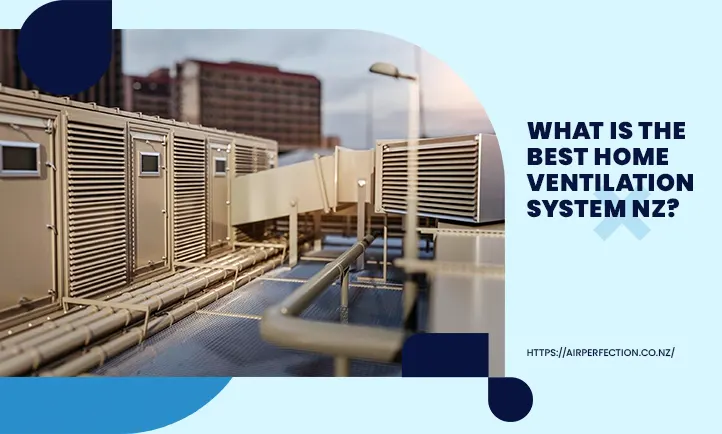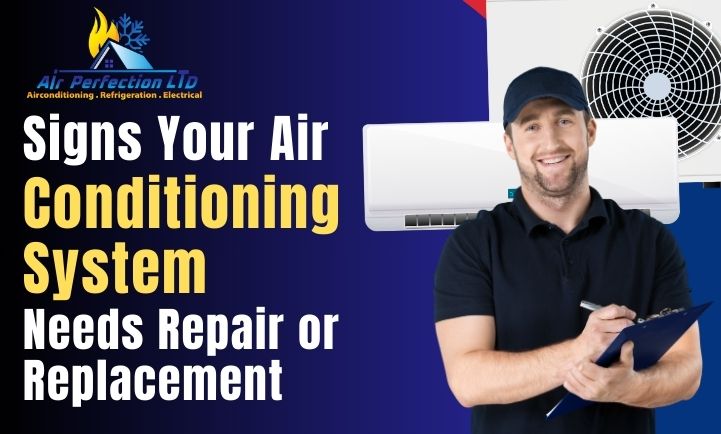Maintaining a healthy and comfortable indoor environment is paramount. New Zealand’s unique climate ranges from subtropical in the north to temperate in the south, presenting specific challenges for homeowners.
These weather conditions and varying humidity levels make proper home ventilation essential for ensuring a safe and pleasant living space. Without adequate ventilation, homes can become breeding grounds for mold, mildew, and other pollutants that can negatively affect the health and comfort of the occupants.
This guide aims to shed light on the significance of the best home ventilation system in NZ and provide a comprehensive overview to help homeowners choose the most suitable system for their needs.
Importance of Home Ventilation in New Zealand
Home ventilation is crucial in maintaining a healthy and comfortable indoor environment. Effectively reducing moisture levels prevents the growth of mold and mildew, thereby protecting both the structural integrity of homes and the health of their occupants.
Also, proper ventilation improves indoor air quality by exchanging stale air with fresh air, minimizing the concentration of pollutants and allergens. It also plays a crucial role in regulating temperature and humidity, ensuring year-round comfort by removing excess heat and moisture in summer while maintaining warmth in winter.
Finally, by controlling moisture levels, ventilation systems safeguard buildings from damage caused by rot, decay, and corrosion, extending their lifespan.
Home Ventilation Systems
Home ventilation systems are designed to exchange stale indoor air with fresh outdoor air while maintaining optimal temperature and humidity levels. They circulate air throughout the house, promoting air movement and filtration.
Types of Home Ventilation Systems
- Heat Recovery Ventilation (HRV): HRV systems recover heat from outgoing air and transfer it to incoming air, ensuring energy efficiency and minimizing heat loss during ventilation.
- Positive Pressure Ventilation (PPV): PPV systems introduce filtered outdoor air into the home at a slightly higher pressure than indoor air, displacing stale air and reducing moisture buildup.
- Balanced Pressure Ventilation (BPV): BPV systems use both exhaust and supply fans to maintain balanced air pressure within the home, effectively ventilating all areas while minimizing energy consumption.
- Exhaust Ventilation Systems: Exhaust systems expel indoor air directly outside, relying on natural air infiltration to bring in fresh air. They are suitable for smaller spaces or as supplementary ventilation.
- Hybrid Systems: Hybrid systems combine features of different ventilation methods to provide customized solutions tailored to specific requirements.
Factors to Consider When Choosing a Home Ventilation System
Several factors should influence the selection of a home ventilation system in New Zealand:
- Climate variations across regions, including temperature, humidity, and prevailing winds.
- Size and layout of the property, including the number of rooms and levels.
- Existing ventilation issues such as condensation, mold, or stale odors.
- Energy efficiency and sustainability goals, considering the long-term operational costs.
- Budgetary constraints and available financing options for installation and maintenance.
Evaluating Popular Home Ventilation Systems in New Zealand
HRV Systems
Heat Recovery Ventilation (HRV) systems are popular in New Zealand for their advanced features aimed at enhancing indoor air quality and energy efficiency.
Features
- Heat recovery technology conserves energy by transferring heat from outgoing stale air to incoming fresh air.
- Filtration systems remove pollutants and allergens, ensuring cleaner indoor air.
- Variable speed fans provide customizable ventilation options.
- Smart controls allow for convenient monitoring and adjustment of airflow.
Pros and Cons
- Pros: Efficient heat recovery, improved indoor air quality, customizable ventilation options.
- Cons: Higher initial cost, and regular maintenance required for optimal performance.
Customer Reviews and Ratings
- Generally positive, highlighting effectiveness in improving indoor air quality and reducing energy consumption. Some challenges mentioned include filter maintenance and occasional maintenance requirements.
PPV Systems
Positive Pressure Ventilation (PPV) systems are known for their effectiveness in reducing moisture and controlling humidity levels.
Features
- Introduce filtered outdoor air into the home at a slightly higher pressure than indoor air.
- Variable speed fans for quiet operation.
- Optional heat exchangers for temperature control.
Pros and Cons
- Pros: Effective at reducing moisture buildup, lower initial cost, minimal installation disruption.
- Cons: May not be as energy-efficient in extremely cold climates, occasional noise issues.
Customer Reviews and Ratings
- Positive feedback on reducing condensation and improving air circulation. Some mention noise issues and variability in performance.
BPV Systems
Balanced Pressure Ventilation (BPV) systems offer balanced airflow throughout the home.
Features
- Heat recovery technology for energy efficiency.
- Zoning options for targeted ventilation.
- Smart controls for automated operation.
Pros and Cons
- Pros: Consistent indoor air quality, energy-saving capabilities, personalized comfort.
- Cons: Higher initial investment, professional installation recommended.
Customer Reviews and Ratings
- Highlight balanced airflow and energy-saving capabilities. Some challenges with installation and maintenance.
Installation and Maintenance Considerations
Installation Process
- Professional installation is recommended for all ventilation systems.
- Consideration of ductwork placement and electrical requirements.
- Compliance with building codes and regulations.
Maintenance Requirements
- Regular filter replacement to maintain air quality.
- Cleaning of vents and ducts to prevent blockages.
- Periodic inspection of fans and motors for optimal performance.
Warranty and After-Sales Service
- Check warranty coverage for parts and labor.
- Inquire about after-sales support and maintenance services offered by the manufacturer or installer.
FAQs
1. Are Home Ventilation Systems Worth It?
Yes, home ventilation systems are worth it as they improve indoor air quality, enhance comfort, prevent mold and mildew, and contribute to energy savings.
2. How Does a Home Ventilation System Work?
A home ventilation system works by bringing in fresh outdoor air, filtering it to remove pollutants, distributing it throughout the home, and exhausting stale indoor air outside, maintaining a healthy indoor environment.
3. How Much Is a Home Ventilation System?
The cost of a home ventilation system varies based on type, size of the property, features, and installation. On average, prices range from NZ$2,000 to NZ$6,000 or more, considering long-term benefits like improved air quality and energy savings.
Conclusion
Choosing the right home ventilation system is a crucial decision that directly impacts your living environment’s health, comfort, and sustainability. By understanding the different types of energy-smart ventilation systems available and considering key factors such as climate, property size, and budget, homeowners in New Zealand can make informed choices that ensure optimal indoor air quality and overall well-being.
For professional guidance and expert assistance in the maintenance and installation of the ideal home ventilation system for your New Zealand home, visit our best AC company today. Our ventilation system company is committed to providing solutions prioritising your comfort and satisfaction.






